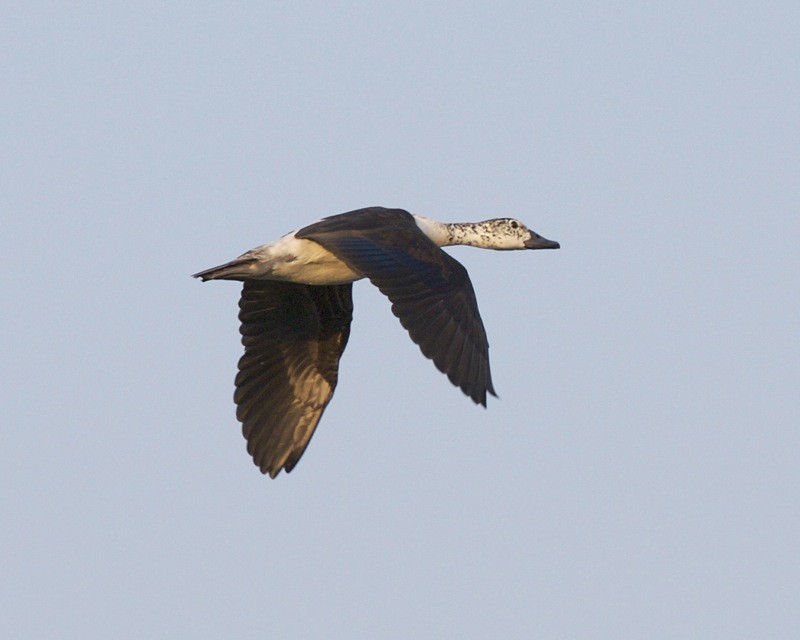Knob-billed Duck
A species of Comb Ducks, Also known as Old World Comb Duck, Knobnosed Duck Scientific name : Sarkidiornis melanotos Genus : Comb Ducks
Knob-billed Duck, A species of Comb Ducks
Also known as:
Old World Comb Duck, Knobnosed Duck
Botanical name: Sarkidiornis melanotos
Genus: Comb Ducks
Content
Description General Info
 Photo By Lip Kee , used under CC-BY-SA-2.0 /Cropped and compressed from original
Photo By Lip Kee , used under CC-BY-SA-2.0 /Cropped and compressed from original Description
This common species is unmistakable. It is one of the largest species of duck. Length can range from 56 to 76 cm (22 to 30 in), wingspan ranges from 116 to 145 cm (46 to 57 in) and weight from 1.03 to 2.9 kg (2.3 to 6.4 lb). Adults have a white head freckled with dark spots, and a pure white neck and underparts. The upperparts are glossy blue-black upperparts, with bluish and greenish iridescence especially prominent on the secondaries (lower arm feathers). The male is much larger than the female, and has a large black knob on the bill. Young birds are dull buff below and on the face and neck, with dull brown upperparts, top of the head and eyestripe. Knob-billed ducks are generally larger in size when compared to comb ducks, and flanks are usually lighter (light grey, in females sometimes whitish). Immature knob-billed ducks look like a large greyish female of the cotton pygmy goose (Nettapus coromandelicus) and may be difficult to tell apart if no other birds are around to compare size and hue. However, knob-billed ducks in immature plumage are rarely seen without adults nearby and thus they are usually easily identified too. The knob-billed duck is silent except for a low croak when flushed. Uncertainty surrounds the correct systematic placement of this species. Initially, it was placed in the dabbling duck subfamily Anatinae. Later, it was assigned to the "perching ducks", a paraphyletic assemblage of waterfowl most of which are intermediate between dabbling ducks and shelducks. As the "perching ducks" were split up, the knob-billed duck was moved to the Tadorninae or shelduck subfamily. Analysis of mtDNA sequences of the cytochrome b and NADH dehydrogenase subunit 2 genes, however, suggests that it is a quite basal member of the Anatidae, vindicating the earliest placement. But its closest living relatives cannot be resolved to satisfaction without further study. 
Size
79 cm
Colors
Black
Gray
White
Blue
Purple
Cyan
Life Expectancy
20-30 years
Nest Placement
Ground
Feeding Habits
Knob-billed Duck consumes a varied diet including small fish, invertebrates, and seeds. It forages by dabbling and upending in water. Notable for its opportunistic feeding, knob-billed Duck adapts its diet to available resources.
Habitat
The knob-billed Duck is typically associated with freshwater environments such as swamps, lakes, rivers, and their deltas, preferring areas with a scattering of trees. Habitats may also extend to flooded grasslands, rice fields, and floodplains. Though they utilize dam lakes, these areas are not commonly used as breeding grounds. Broadly, the knob-billed Duck can be found in tropical regions at elevations reaching up to 2400 meters in parts of Africa, including Ethiopia and Malawi, and up to 1500 meters on Madagascar.
Dite type
Omnivorous
General Info
Feeding Habits
Bird food type
Species Status
Not globally threatened.